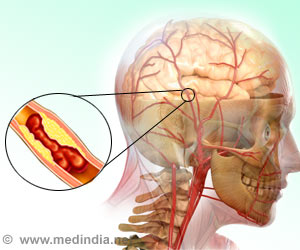Now, scientists hope that they can commence monitoring of the foetal heartbeat much earlier than before with the invention of a new non-invasive system.
While tiny fluctuations in a foetus' heartbeat can indicate distress, currently there is no way to detect such subtle variations except during labour, when it could be too late to prevent serious or even fatal complications.However, the new system is less expensive and easier to use than current technologies, it could also cut the rate of Caesarean deliveries by helping clinicians rule out potential problems that might otherwise prompt the procedure.
And unlike the currently used device to monitor subtle changes in the foetal heartbeat during labour that needs to be attached to the foetus itself, the new product would be non-invasive.
"Our objective is to make a monitoring system that's simultaneously cheaper and more effective" than what is currently available, said Dr. Gari Clifford, a principal research scientist at the Harvard-MIT Division of Health Sciences and Technology.
The researchers expect that the system could be commercially available in two to three years pending FDA approval.
Fluctuations in the foetal heartbeat could result in bad outcomes, including certain infections and a loss of oxygen to the baby if it is strangled by its own umbilical cord.
Advertisement
While ultrasound is not sensitive enough to catch variations in the rhythm that could indicate problems, ECG has not yet been reliably used, except by attaching an electrode to the baby's scalp during labour.
Advertisement
However, the new system separates the maternal ECG signal from the foetus' and background noise-thanks to a complex algorithm derived from the fields of signal processing and source separation.
Together, these fields work to break any signal into its source components.
For using the system, a woman would wear a wide belt around her abdomen fitted with several ECG electrodes and the data collected is then fed to a monitor and analysed with the new algorithm, which in turn separates the different signals.
The team believe that the system could be deployed during the second trimester of pregnancy (around 20 weeks) and perhaps earlier.
Clifford noted that "one of the nice things about monitoring the foetal ECG through the mother's abdomen is you're getting a multidimensional view of the foetal heart" because its electrical activity is recorded from many different angles.
And the better view could help catch problems that might have gone unnoticed before.
The researchers have described their approach in papers published in IEEE Transactions on Biomedical Engineering and the EURASIP Journal on Advances in Signal Processing.
Source-ANI
TAN










